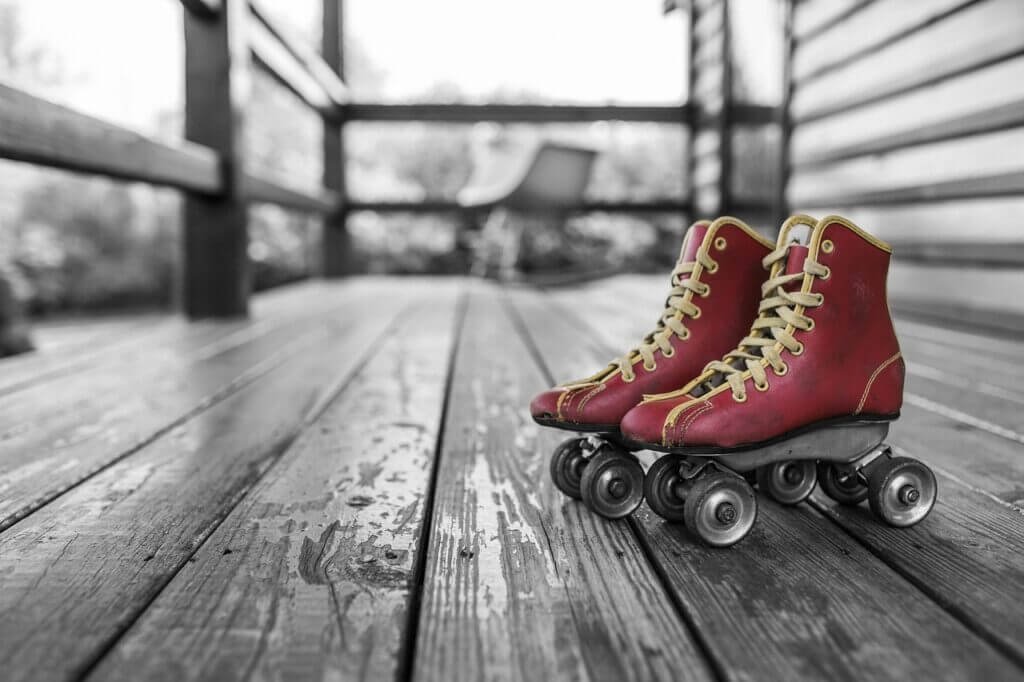After pushing your limits during intense workouts, it’s no surprise that you may find yourself dealing with muscle soreness and wondering how to recover effectively. While muscle soreness is a common and expected part of the exercise process, there are strategies you can implement to address it and support your body’s recovery. By understanding the causes of muscle soreness and incorporating proper rest, hydration, nutrition, and active recovery techniques, you can optimize your post-workout routine and bounce back stronger than ever. Discover the key tips and tricks to alleviate muscle soreness and promote efficient recovery in this informative article.

Understanding Muscle Soreness
What Causes Muscle Soreness?
Muscle soreness is that uncomfortable sensation you feel in your muscles after an intense workout or physical activity. This soreness, also known as delayed onset muscle soreness (DOMS), is typically experienced 24 to 48 hours after exercise. But what actually causes muscle soreness?
When you engage in physical activities that your body is not accustomed to, such as trying a new exercise or increasing the intensity of your workout, microscopic damage occurs in your muscle fibers. This damage triggers an inflammatory response in your body, leading to the sensations of pain and stiffness that we commonly associate with muscle soreness.
Different Types of Muscle Soreness
There are actually two main types of muscle soreness: acute muscle soreness and delayed onset muscle soreness (DOMS).
Acute muscle soreness is the immediate soreness you may feel during or immediately after an exercise session. It typically subsides relatively quickly, usually within a few hours or a day, and is often the result of lactic acid build-up in your muscles.
On the other hand, delayed onset muscle soreness (DOMS) is the soreness that sets in 24 to 48 hours after exercising. DOMS is caused by microscopic muscle damage, as mentioned earlier, and is generally more intense and longer-lasting than acute muscle soreness.
Importance of Muscle Recovery
Why is Muscle Recovery Important?
Muscle recovery is a crucial aspect of any fitness routine, and it deserves just as much attention as the actual workouts themselves. When you exercise, you’re creating stress and strain on your muscles, and it’s during the recovery phase that your muscles actually grow stronger. Here’s why muscle recovery is so important:
Repair and Adaptation: During the recovery process, your body repairs the microtears in your muscle fibers, leading to muscle growth and increased strength. Additionally, your muscles adapt to the demands placed upon them, becoming more efficient and better prepared for future workouts.
Injury Prevention: Adequate muscle recovery helps prevent injuries by allowing your body to heal and regenerate. Without proper recovery, overuse injuries, muscle imbalances, and other issues may arise, hindering your progress and potentially sidelining you from your fitness goals.
Improved Performance: When you give your muscles enough time to recover, you’ll notice improved performance during your workouts. Your muscles will be able to generate more power and endurance, and you’ll be less prone to fatigue, allowing you to achieve better results in your training sessions.
Benefits of Proper Recovery
Proper muscle recovery offers a myriad of benefits that go beyond injury prevention and improved performance. Here are a few additional benefits of prioritizing recovery in your fitness routine:
Reduced Muscle Soreness: By optimizing your recovery strategies, you can minimize the severity and duration of muscle soreness, making it easier to stay consistent with your workouts.
Enhanced Range of Motion: Proper recovery practices, such as stretching and foam rolling, can help improve your flexibility and range of motion. This can enhance your athletic performance and reduce the risk of injuries.
Mental Well-being: Recovery is not only physical but also psychological. Taking the time to rest and recover allows for mental rejuvenation, reducing stress levels and promoting overall well-being.

Effective Measures for Muscle Recovery
Rest and Sleep
One of the most essential aspects of muscle recovery is getting enough rest and sleep. During rest, your body can repair damaged muscle fibers and replenish energy stores. Aim for at least 7-9 hours of quality sleep per night, and consider incorporating short rest periods throughout your day to allow your muscles to recover.
Hydration and Nutrition
Proper hydration and nutrition play a crucial role in muscle recovery. Staying hydrated helps deliver essential nutrients to your muscles and aids in the removal of waste products. Aim to drink plenty of water throughout the day, particularly before, during, and after exercise. Fuel your body with a well-balanced diet rich in lean proteins, carbohydrates, and healthy fats to support muscle repair and growth.
Stretching and Foam Rolling
Incorporating stretching and foam rolling into your post-workout routine can help alleviate muscle tension and promote flexibility. Stretching enhances blood flow to your muscles, helping to flush out toxins and reduce soreness. Foam rolling, or self-myofascial release, involves using a foam roller to target tight or tender areas in your muscles, releasing muscle knots and promoting faster recovery.
Active Recovery
While rest days are important, active recovery can also aid in muscle recovery. Engaging in low-impact activities like swimming, cycling, or gentle yoga on your recovery days can enhance blood circulation and help reduce muscle soreness. Just be sure to listen to your body and choose activities that are not overly strenuous.
Cold and Heat Therapy
Applying ice packs or cold compresses to sore muscles can reduce inflammation and numb pain, providing immediate relief. Contrast therapy, which involves alternating between hot and cold treatments, can also be effective in promoting muscle recovery and reducing soreness. Heat therapy, such as using a heating pad or taking a warm bath, can help increase blood flow and relax tense muscles.
Massage and Manual Therapy
Professional massages or manual therapies, such as chiropractic adjustments or acupuncture, can be beneficial for muscle recovery. These therapies help improve blood flow, release muscle tension and knots, and promote relaxation. If a professional massage is not feasible, self-massage techniques using massage balls or a foam roller can also provide relief.
Supplements and Natural Remedies
Certain supplements and natural remedies may aid in muscle recovery and reduce soreness. Options such as omega-3 fatty acids, collagen peptides, tart cherry juice, and turmeric have been shown to have anti-inflammatory properties and may help accelerate the recovery process. However, it’s important to consult with a healthcare professional before adding any new supplements to your routine.
Preventing Muscle Soreness and Enhancing Recovery
Proper Warm-up and Cool-down
One of the best ways to prevent muscle soreness and enhance recovery is to properly warm up and cool down before and after your workouts. Warm up with dynamic stretches and light cardio exercises to increase blood flow and prepare your muscles for the upcoming activity. Cooling down with static stretches and gentle movements gradually brings your heart rate back to normal and helps remove metabolic waste products from your muscles.
Gradual Progression
Avoiding sudden spikes in the intensity or duration of your workouts can help prevent excessive muscle soreness and promote better recovery. Gradually progress your workouts by increasing the load, duration, or intensity over time, allowing your muscles to adapt and recover between sessions. This gradual approach lowers the risk of injuries and muscle damage.
Listen to Your Body
One of the most important aspects of preventing muscle soreness and enhancing recovery is listening to your body. Pay attention to any warning signs of overexertion or potential injuries. If you’re experiencing excessive fatigue, persistent soreness, or any sharp or unusual pain, it may be a sign that you need to dial back the intensity or take a rest day. Pushing through pain could potentially lead to more severe injuries and longer recovery times.
Avoid Overtraining
Overtraining occurs when you push your body beyond its limits without allowing enough time for proper recovery. This can lead to increased muscle soreness, decreased performance, and a higher risk of injuries. Avoid overtraining by incorporating rest days into your routine, varying your exercise routine, and giving yourself ample recovery time between intense workouts.
Active Lifestyle
Maintaining an active lifestyle beyond your structured workouts can also contribute to better muscle recovery. Engage in activities like walking, hiking, or playing recreational sports on your rest days. Keeping your body moving promotes blood circulation, helps prevent muscle stiffness, and supports overall fitness and well-being.

Muscle Soreness and Recovery Myths Debunked
No Pain, No Gain
The notion of “no pain, no gain” is a common misconception when it comes to muscle soreness and recovery. While it’s normal to feel some level of discomfort during or after a challenging workout, it’s important to distinguish between productive discomfort and pain that indicates potential injury. Pushing through excessive pain can lead to further damage and hinder your recovery progress. It’s crucial to listen to your body and find a balance between challenging yourself and avoiding unnecessary harm.
DOMS Must Mean a Good Workout
Delayed onset muscle soreness (DOMS) is often mistakenly perceived as a measure of the effectiveness of a workout. While it’s true that DOMS is an indication of muscle breakdown and subsequent repair, it doesn’t necessarily correlate to the quality or productivity of your workout session. A lack of soreness doesn’t mean your workout was inadequate, just as severe soreness doesn’t necessarily mean you had a phenomenal workout. Focus on other factors such as performance improvements, overall fitness progression, and the achievement of your personal goals rather than solely relying on muscle soreness as a measure of success.
No Need for Rest Days
Some individuals believe that exercising every day without rest days is the key to achieving optimal results. However, this is a misguided approach that can do more harm than good. Rest days are crucial for allowing your muscles and body to recover and adapt to the stress of exercise. Without adequate rest, you increase your risk of overuse injuries, decreased performance, and hindered progress. Incorporate rest days into your workout schedule to give your body the time it needs to repair and rebuild.
In conclusion, understanding muscle soreness and prioritizing muscle recovery play vital roles in maximizing the benefits of your workouts and minimizing the risk of injuries. By incorporating effective recovery measures, preventing muscle soreness, and debunking common myths, you can achieve optimal results while maintaining a healthy, balanced approach to fitness. Remember to listen to your body, take the necessary time to rest and recover, and embrace an active lifestyle that ranges from challenging workouts to gentle activities on your rest days. Your muscles will thank you, and you’ll be well on your way to reaching your fitness goals with a smile on your face.


